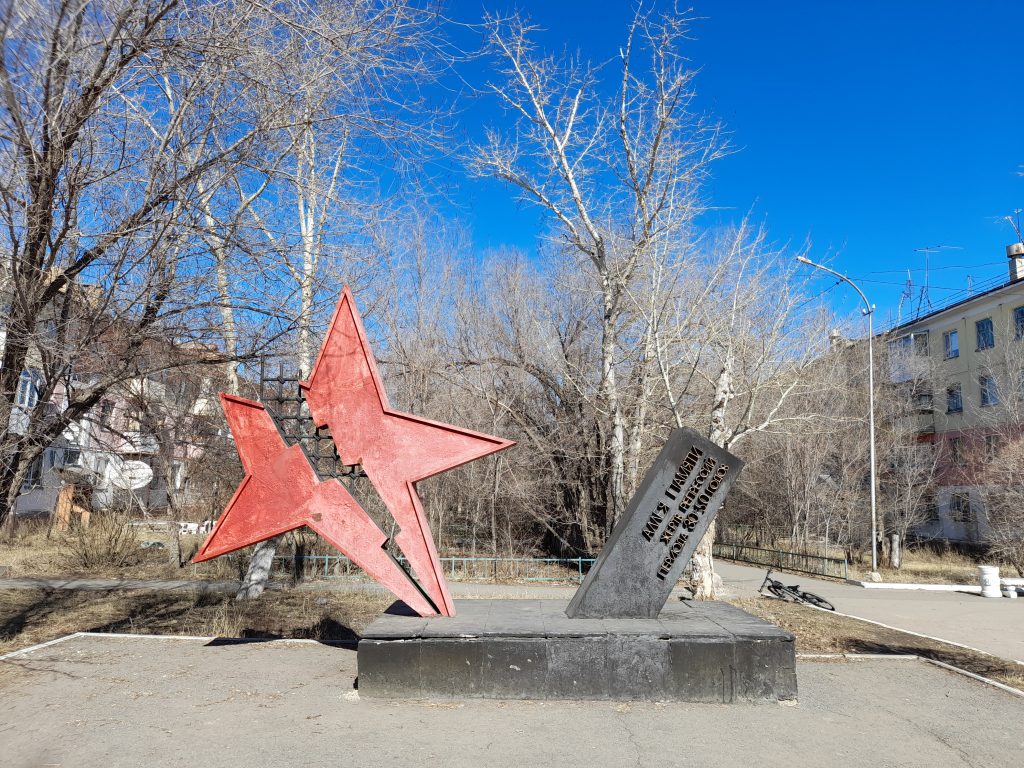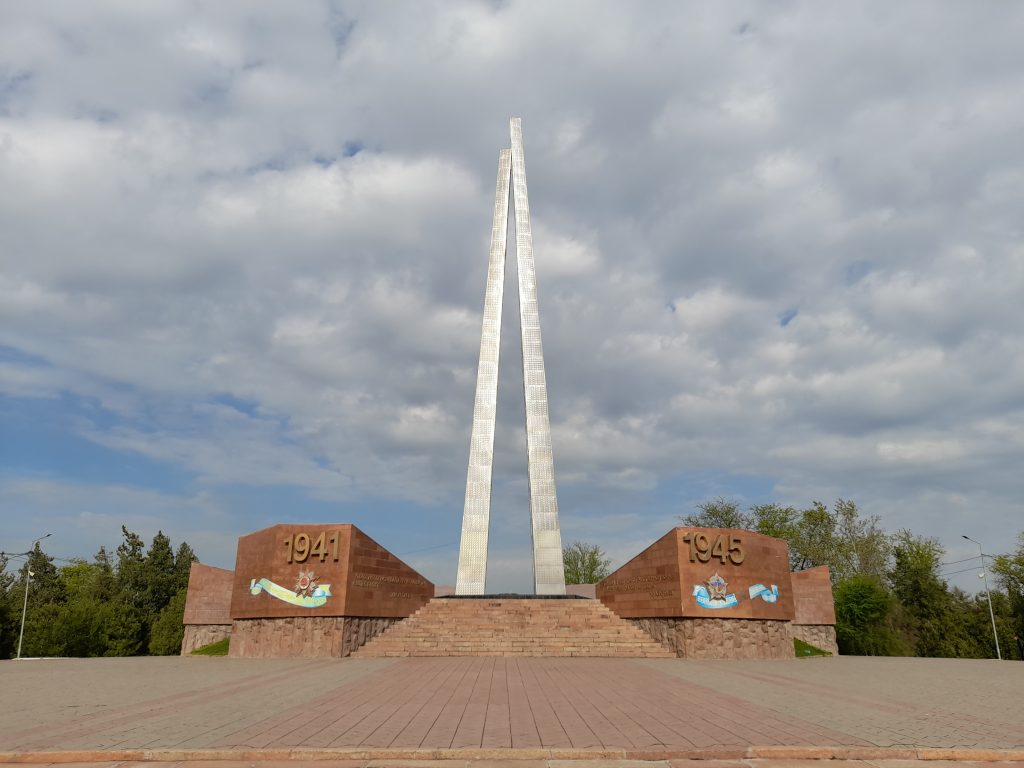Marc Díaz
Researcher and educator in human rights at the University of Barcelona’s Solidarity Foundation
Cover picture: Arch of Sorrow, Alzhir Museum-Memorial complex. Picture: Marc Díaz Planas
There are currently four museums that specifically focus on political repression during Soviet times in Central Asia. One is in Uzbekistan and the other three are dotted around Kazakhstan.
Spanning an area more than four times the size of France and with almost 20 million inhabitants, today’s Kazakhstan is in many respects still the result of the Soviet past: colonisation and above all Stalin’s deportations, as well as the internal mobility driven by the system itself, have shaped the demography of today’s Kazakhstan. For example, this accounts for the fact that 15 per cent of the population is Russian with Kazakh citizenship. In political terms, it is considered an authoritarian state, officially committed to a policy of inter-ethnic harmony, while promoting the language and identity of the Kazakh ethnicity. The economic structure also owes much to the Republic’s role in the USSR’s economic organisation.
Moreover, Kazakhstan is a major site in terms of the history of political repression and especially of the Gulag system. Some of these sites have been commemorated as memorials and museums, as part of a policy of remembrance that began with independence and was tentatively implemented so as not to upset Moscow. These include the ALZHIR Museum and Memorial complex of Victims of Political Repressions and Totalitarianism, the KarLag Museum and the Museum of Political Repression.

If we begin the itinerary from the northern steppes, approximately 30 km from the brand new capital Astana, we will come upon the “ALZHIR” Museum. It was popularly known as the “Akmolinsk camp for wives of traitors to the Motherland”, or the “26th point” of the “Karaganda Corrective Labour Camp” (KarLag), an extensive compound of prison and labour camps. More than 18,000 women were held there between 1938 and 1958, and today the memorial complex, inaugurated in 2007 by President Nazarbayev, stands on the site. The big Arch of Sorrow, visible from a distance, marks the entrance to the site that is surrounded by a row of 14 marble plaques, each of them placed by the embassies of the countries of origin of the prisoners held in ALZHIR. There is one glaring absence: no Russian Federation plaque, despite the fact that the vast majority of the women prisoners were Russian or originated from Russian territories. Metres away lies the two-storey building that houses the museum itself. The first floor is dedicated to the various events surrounding Russia’s takeover of Kazakh territories from the 19th century to the early years of Soviet rule. Only the second floor is devoted strictly to this labour camp and the women prisoners, with a modest but commendable mention of the efforts made by survivors to preserve the memory. Outside the museum, a few metres away, it is worth visiting the first attempts made in 1989 to bear witness to the former site of the camp: a half-rusted metal structure bearing the name “ALZHIR” and a humble monument erected at the very height of glasnost on the initiative of women prisoners, their families and the leaders of the local kolkhozes [collective farms in the former Soviet Union]. Finally, the modernity of the ALZHIR Museum is in contrast to the neglect of one of the mass graves located on the outskirts of the village, with no signs and littered with rubbish. Only a metal fence encloses the site where four monoliths, two also from 1989, stand in memory of the anonymous women buried there.
Continuing south, after an approximately four-hour train journey, we reach the town of Karagandy. On the outskirts is the Museum of Memory of the Victims of Repression in the Dolinka Settlement, also known as the KarLag Museum. For many years, the region was one of the main coal mining sites in the entire Soviet Union and the KarLag labour camp provided the workforce for this activity. Today, the town is a living testimony to Stalin’s repression: many of its inhabitants are the children and grandchildren of Germans, Poles, Koreans and other people deported in the 1930s and 40s. The museum is located in the village of Dolinka, in the camp’s administrative building, which was almost in ruins until it was rebuilt in the late 2000s in keeping with its original design. Although officially opened in 2001, it did not open to the public until 2011. During its time in operation, from 1930 to 1959, sources reveal that between 800,000 and 1 million prisoners were held there. In contrast to the ALZHIR complex, almost the entire museum is specifically focused on the KarLag (only one of the 30 exhibition spaces is not devoted to an area directly related to the camp). Also noteworthy is the basement, the most experience-oriented part of the visit, which exudes an oppressive atmosphere with recreations of interrogation and torture rooms, although there is no evidence that such “activities” took place in these spaces. One of the last rooms concerns the partnership with a research and education initiative run by a local private academic institution.

Outside the museum, if we cross the town to the south, we reach what is known as the Mamochkino cemetery. Here visitors will see a fenced-off plot of land, which depending on the time of year is thick with grass, covering part of the mass graves where an unknown number of children who died in the KarLag “archipelago” were buried. The space contains several small monoliths erected on the initiative of the church and private individuals, as well as a dozen old metal crosses put up by relatives. Today’s relatively well-kept appearance, including a sign in Kazakh, Russian and English, is due to maintenance work carried out five years ago by several local and academic institutions.
The third case is in the far south of the country, traditionally more urban and commercial: the Museum of Victims of Political Repression in the city of Shymkent. Set up in 2001, it proudly claims to be Kazakhstan’s first museum on the political repression of 1937-38. At the centre of the exhibition hall is an eerie sculpture evoking the repression, surrounded by panels featuring Kazakh nationalist intellectuals from the early 20th century. There are seven exhibits with photos and document facsimiles, two of which deal specifically with the political repression of the 1930s. The visit ends in a Hall of Sorrow with the names of local victims. Furthermore, the museum is located a few metres from the huge memorial in Gloria dedicated to the struggle and the fallen in the Great Patriotic War, the Second World War in the West. It might be a model example of a Soviet memorial in Victory – common in many former Soviet cities – were it not for the fact that it was inaugurated in 2010. All this makes for a good metaphor for the coexistence (or cohabitation?) of different narratives about the Soviet historical past in Kazakhstan: on the one hand, one that glorifies what the USSR meant and its goals, and another that disassociates itself by asserting a Kazakh tradition and identity and bringing its repressive dimension to the fore. All this goes beyond the anecdotal and also affects memory policies and the place that Soviet history occupies in the collective imagination.
Finally, and in conclusion, there is an uncritical view of the subject matter. In addressing Stalinist repression, many events in Tsarist Russia, or the demands for self-government in the late 1980s, are dealt with at length, while more contemporary cases of political repression are overlooked.

Secondly, the discourse of national demands runs through the content and approach of two of the museums, ALZHIR and Shymkent. This can be seen in the abundance of spaces devoted to national history events that predate the political repression of the 1930s through to the 1950s. This approach somewhat blurs the museum’s subject matter and thus the endeavours to remember the political repressions of this period.
Last but not least, we should also draw attention to the quality and well-maintained facilities of the three museums. Their accessibility, both in terms of the options for getting there and the price of admission, should also be underlined. The same applies to the availability of information on the exhibitions, which are in Kazakh, Russian and English (with the exception of the Shymkent Museum), as well as the availability of audio-guide and guide services, also in English. This might be surprising given the low number of visitors, another issue that would be worth investigating.

